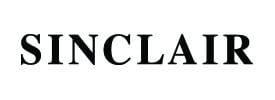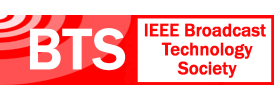- About
- Members
- Sponsors
- Subcommittees
- Technical Documents
- News
- Events
- Spotlight ATSC 3.0
- Contact Us
- Member Login
- Member Meetings
- Advanced Search
Search Site
Member Links
- About
- Members
- Sponsors
- Subcommittees
- Technical Documents
- News
- Events
- Spotlight ATSC 3.0
- Contact Us
- Member Login
- Member Meetings
- Advanced Search
ATSC 3.0
A/343, “Captions and Subtitles”
Posted on December 22, 2016 in
This standard defines the required technology for closed caption and subtitle tracks over ROUTE-DASH and MMT transports. This includes the content essence and the packaging and timing. Download current version: A/343:2025-07, “Captions and Subtitles”, 17 July 2025. This version of the Standard is normatively referenced in A/300:2025-07. Previous Versions There are multiple versions of this […]
A/330, “Link-Layer Protocol”
Posted on October 3, 2016 in
This standard defines the ATSC Link-Layer Protocol (ALP). ALP corresponds to the data link layer in the OSI 7-layer model. ALP provides a path to deliver IP packets, link layer signaling packets, and MPEG-2 Transport Stream (TS) packets down to the RF Layer and back, after reception. ALP also optimizes the proportion of useful data […]
A/322, “Physical Layer Protocol”
Posted on October 3, 2016 in
This Standard describes the RF/Transmission of a physical layer waveform. This waveform enables flexible configurations of physical layer resources to target a variety of operating modes. The intent is to signal the applied technologies and allow for future technology adaptation. Download current version: A/322:2025-07, “Physical Layer Protocol”, 17 July 2025. This version of the Standard […]
A/335, “Video Watermark Emission”
Posted on September 13, 2016 in
The video watermark technology described in this document provides the capability to robustly embed ancillary data in the transmitted pixels of a video signal. It is intended to provide a data path for its ancillary data payload that can readily survive changes in video compression data rate, transcoding to other video compression codecs, and delivery […]
A/334, “Audio Watermark Emission”
Posted on September 13, 2016 in
This document specifies the VP1 audio watermark for use with systems conforming to the ATSC 3.0 family of specifications. The document specifies the format in which the audio watermark resides in a PCM audio signal. Emission by a broadcaster of the audio watermark is optional. Download current version: A/334:2025-07, “Audio Watermark Emission”, 17 July 2025. This […]
A/321, “System Discovery and Signaling”
Posted on March 24, 2016 in
This document describes the system discovery and signaling architecture for the ATSC 3.0 physical layer. Broadcasters anticipate providing multiple wireless-based services, in addition to conventional broadcast television in the future. Such services may be time-multiplexed together within a single RF channel. The bootstrap provides a universal entry point into a broadcast waveform. The bootstrap employs […]
News Categories
News Archives
Subscribe
Subscribe to The Standard, our monthly newsletter. Learn More
Join ATSC
ATSC is a membership organization with both voting and observer categories. Voting members include corporations, nonprofit organizations, and government entities, and they participate actively in the work of ATSC. Observers are individuals or entities not eligible to be a voting member.
Subscribe to our Newsletter
Subscribe to The Standard, our monthly newsletter, to stay up-to-date with ATSC news and events around the world.
Site Links
Contact Us
ATSC
1300 I Street NW, Suite 400E
Washington, DC 20005 USA
Do you have questions about ATSC?
About ATSC
ATSC, the Broadcast Standards Association, is an international, non-profit organization developing voluntary standards and recommended practices for digital terrestrial broadcasting. Serving as an essential force in the broadcasting industry, ATSC guides the seamless integration of broadcast and telecom standards to drive the industry forward. Currently, the ATSC 3.0 Standard is providing the best possible solution for expanding the potential of the broadcast spectrum beyond its traditional application to meet changing needs. From conventional television to innovative digital data services, ATSC has one clear goal: to empower the broadcasting ecosystem like never before.
© 2025 ATSC





































